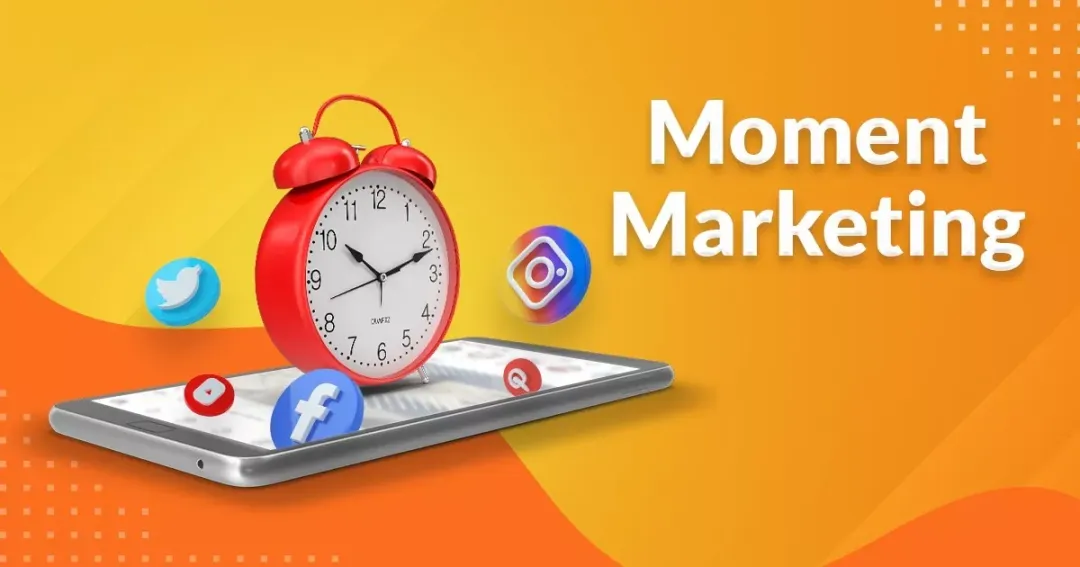How Much #MomentMarketing Is Too Much Moment Marketing? Striking the Perfect Balance

In today’s fast-paced digital landscape, brands are continuously seeking ways to connect with their audiences through timely, relevant, and emotionally resonant content. This practice, known as moment marketing, leverages current events, trends, or cultural moments to spark engagement and drive brand awareness. However, while the allure of capitalizing on the “now” is undeniable, there is a fine line between being agile and being overzealous. So, how much moment marketing is too much moment marketing? In this in-depth guide, we explore the benefits, pitfalls, and strategies for maintaining a balanced approach that amplifies your brand without overwhelming your audience.
What is Moment Marketing?
Moment marketing is a strategic approach where brands craft campaigns that tap into trending topics or current events to engage consumers in real time. Rather than relying solely on evergreen messaging, moment marketing is agile and reactive—it responds to what’s happening right now, whether that’s a major sporting event, a viral social media trend, or even unexpected global news.
Key Elements of Moment Marketing
- Timeliness: Campaigns must be launched quickly to capitalize on current events.
- Relevance: The messaging should resonate with the audience’s current interests and emotions.
- Authenticity: To succeed, moment marketing must feel natural and aligned with the brand’s voice.
By harnessing the power of real-time marketing, brands can create content that feels spontaneous and relevant, sparking conversations and deepening emotional connections with consumers.
The Allure and Benefits of Moment Marketing
Capturing Consumer Attention
In an era of content overload, capturing consumer attention is a major challenge. Moment marketing provides a golden opportunity to stand out by:
- Tapping into trends: When your campaign aligns with a trending topic, it’s more likely to be shared and discussed.
- Boosting brand visibility: Leveraging current events can amplify reach, as audiences actively search for related content.
- Creating emotional resonance: Aligning your messaging with an event that matters to your audience builds emotional connections and brand loyalty.
Cost-Effectiveness and Agility
When executed correctly, moment marketing is a cost-effective way to achieve significant engagement. Unlike traditional advertising channels that require long planning cycles and hefty budgets, reactive campaigns can be implemented swiftly and often with minimal financial investment. This agility allows brands to experiment and learn, refining their strategies over time.
Enhancing Consumer Engagement
Real-time campaigns foster a sense of community and immediacy. By engaging consumers at the right moment, brands can:
- Increase interaction on social media platforms.
- Stimulate user-generated content.
- Encourage shares, likes, and comments that boost organic reach.
When Does Moment Marketing Become Too Much?
While the benefits are clear, overdoing moment marketing can lead to several challenges that may undermine your brand’s reputation and customer engagement.
Over-Saturation and Brand Fatigue
Bombarding your audience with moment-driven content can lead to brand fatigue. When consumers see constant reactive posts, the novelty wears off, and your messaging might start to feel repetitive or even desperate. This over-saturation can cause:
- Audience disengagement: Consumers may begin to ignore your posts altogether.
- Diluted messaging: The brand’s core values and long-term messaging risk being overshadowed by transient trends.
- Inauthenticity: If your brand appears to chase every trend without a clear strategy, consumers might question your authenticity and commitment to your identity.
Inauthenticity and Misalignment
Moment marketing should feel like an organic extension of your brand. However, excessive or ill-fitted reactive campaigns can create a disconnect between your brand’s voice and the moment you’re trying to capitalize on. For example:
- Forced associations: Jumping on trends that don’t align with your brand can confuse your audience.
- Backlash and negative sentiment: Misjudged or insensitive moment marketing can result in public criticism, reducing consumer trust.
Consumer Backlash
With the rise of social media, consumers are more vocal than ever about brands that seem to exploit trends for opportunistic gains. When moment marketing becomes too frequent or feels insincere:
- Criticism on social channels may escalate.
- Negative reviews and public debates can damage your reputation.
- Long-term loyalty may be compromised if consumers feel manipulated.
Finding the Sweet Spot: How to Balance Moment Marketing
To reap the benefits of moment marketing without falling into its traps, brands must adopt a thoughtful, measured approach. Here are some strategies to help you strike the perfect balance:
1. Prioritize Relevance Over Frequency
Instead of reacting to every single trending moment, focus on those that are genuinely relevant to your brand’s mission and your audience’s interests. Ask yourself:
- Does this moment align with our brand values?
- Will our audience find this message valuable and authentic?
Quality should always triumph over quantity. It’s better to have a few well-crafted, thoughtful campaigns than numerous half-baked ones that feel forced.
2. Develop a Strategic Framework
Implement a framework that allows your marketing team to evaluate and respond to trends systematically. Consider the following steps:
- Trend Analysis: Use digital analytics tools to monitor trending topics and social media chatter. Platforms like Google Trends, social listening tools, and sentiment analysis can provide real-time insights.
- Alignment Check: Develop criteria to assess whether a trend fits your brand. For instance, does the trend complement your core message, or does it require a significant deviation from your brand personality?
- Response Planning: Create a rapid-response plan that includes guidelines for tone, visuals, and messaging to ensure consistency with your overall branding strategy.
3. Invest in Data-Driven Decision Making
Utilize KPIs and real-time analytics to gauge the impact of your moment marketing campaigns. Data can help you understand:
- Engagement metrics: Likes, shares, comments, and click-through rates.
- Sentiment analysis: Are consumers responding positively or negatively?
- Conversion rates: How many interactions translate into actual sales or leads?
With a robust measurement system in place, you can quickly adjust your strategy if a campaign isn’t performing as expected.
4. Balance Reactive and Evergreen Content
While moment marketing is valuable, it shouldn’t replace your core content strategy. Maintain a healthy mix of:
- Evergreen content: Timeless pieces that reinforce your brand identity and provide long-term value.
- Reactive campaigns: Agile posts that leverage current events and trends.
This balanced approach ensures that your audience receives a consistent message while also enjoying the excitement of timely, trending content.
5. Foster Authenticity Through Storytelling
Authenticity is key in moment marketing. Instead of merely reacting to trends, weave them into your brand narrative with compelling storytelling. Focus on:
- Human-centered stories: Show how current events impact real people, and relate these stories back to your brand values.
- Transparency: Acknowledge when you’re using a trend and explain why it matters to your audience.
- Creativity: Use humor, empathy, or creativity to create memorable content that resonates on a personal level.
Authentic storytelling helps mitigate the risk of appearing opportunistic or inauthentic.
Real-World Examples and Case Studies
Case Study: Nescafé’s “Now’s Good” Campaign
One standout example of balanced moment marketing comes from Nescafé’s “Now’s Good” campaign. Facing a saturated market, Nescafé harnessed the power of simple storytelling to reframe the idea of a coffee break. By portraying quick, restorative moments that fit seamlessly into busy lifestyles, the campaign not only reversed a decline in product usage but also increased volume share and penetrated new consumer segments. This success was achieved by aligning the campaign with the everyday moments of its audience, rather than forcing a connection with every passing trend.
Learning from Missteps
Conversely, there have been instances where overusing moment marketing has backfired. Brands that chase every trending hashtag or news event without a coherent strategy risk diluting their messaging. Consumers quickly learn to tune out such content, leading to diminished engagement and potential reputational damage. The key takeaway is that every campaign must be evaluated on its alignment with your long-term brand strategy—not just its potential to go viral.
Best Practices for Sustainable Moment Marketing
Here are some practical tips to ensure your moment marketing efforts are both impactful and sustainable:
Create a Content Calendar with Flexibility
Develop a content calendar that includes slots for evergreen content as well as opportunities for reactive campaigns. This allows your team to plan ahead while remaining agile enough to incorporate trending topics when they arise.
Monitor Trends Closely
Invest in social listening and analytics tools to keep a finger on the pulse of consumer sentiment and trending topics. This proactive approach enables you to react quickly—but wisely—to emerging trends.
Evaluate Campaign Impact Regularly
Conduct regular reviews of your moment marketing campaigns. Assess what worked, what didn’t, and why. Use this feedback to refine your criteria for selecting trends and to improve your rapid-response process.
Train Your Team for Agility
Equip your marketing team with the skills and tools needed to respond to trends in real time. This might include cross-training in digital analytics, creative content development, and crisis management to ensure they can handle both the excitement and challenges of moment marketing.
Maintain Consistent Brand Voice
Even when reacting to different trends, your messaging should always reflect your core brand values. Consistency builds trust and helps consumers recognize your brand, even in a crowded digital landscape.
Balance High-Impact Campaigns with Regular Content
Avoid overloading your audience by alternating between high-impact, trend-driven campaigns and regular, consistent content that reinforces your brand message over time.
The Role of Data and Analytics
Data is the backbone of any successful digital marketing strategy, and moment marketing is no exception. Leveraging real-time analytics helps you understand:
- Consumer engagement: Which moments are resonating, and which are falling flat.
- Conversion rates: How many interactions lead to meaningful actions such as purchases or sign-ups.
- Sentiment shifts: Whether your campaigns are generating positive buzz or unintended negative reactions.
Using these insights, you can fine-tune your approach, ensuring that your moment marketing efforts deliver maximum impact without overwhelming your audience.
Frequently Asked Questions (FAQ)
Q1: What is moment marketing?
A: Moment marketing is a strategy where brands create campaigns that tap into current events, trends, or cultural moments to connect with consumers in real time. It’s all about being agile, relevant, and authentic.
Q2: How do I know if my moment marketing campaign is overdone?
A: Signs that you may be overdoing moment marketing include consumer fatigue, decreased engagement, and a diluted brand message. It’s important to monitor metrics such as engagement rates, sentiment analysis, and conversion rates to ensure your campaigns remain effective and aligned with your brand values.
Q3: Can moment marketing harm my brand’s reputation?
A: Yes, if not executed carefully. Overuse or misalignment of moment marketing can lead to perceptions of inauthenticity or opportunism, which may damage your brand’s reputation. Balancing reactive content with consistent, core messaging is key to mitigating this risk.
Q4: What are some best practices for effective moment marketing?
A: Best practices include:
- Prioritizing relevance over frequency.
- Creating a strategic framework for trend analysis and response.
- Using data and analytics to monitor campaign performance.
- Balancing moment marketing with evergreen content.
- Ensuring your messaging remains authentic and true to your brand voice.
Q5: How can I measure the success of my moment marketing campaigns?
A: Success can be measured through key performance indicators (KPIs) such as engagement metrics (likes, shares, comments), conversion rates, sentiment analysis, and overall impact on brand awareness. Regularly reviewing these metrics helps you adjust your strategy in real time.
Q6: How can small businesses benefit from moment marketing?
A: Small businesses can leverage moment marketing to gain significant exposure at a relatively low cost. By reacting to trends that are relevant to their niche, small businesses can enhance their visibility, engage with their target audience, and build a loyal customer base without the need for large marketing budgets.
Q7: What if my moment marketing campaign fails?
A: Not every campaign will be a hit. If a moment marketing effort doesn’t perform as expected, use the data gathered to understand why. Learn from the misstep by analyzing consumer feedback and performance metrics, and adjust your strategy for future campaigns.
Conclusion
Moment marketing offers a dynamic way to engage with consumers by capitalizing on real-time events and trends. However, as with any powerful marketing tool, it comes with risks. Overusing moment marketing can lead to brand fatigue, inauthentic messaging, and even consumer backlash if not handled carefully. The key is to strike a balance—leveraging timely opportunities while staying true to your brand’s core values and long-term strategy.
By prioritizing relevance, maintaining consistency, and using data-driven insights to guide your decisions, you can harness the power of moment marketing without overwhelming your audience. Remember, quality and authenticity are far more impactful than a constant barrage of reactive content.
For brands ready to elevate their digital strategy and integrate moment marketing in a balanced, sustainable way, consider partnering with experts who understand the nuances of real-time consumer engagement. If you’re looking for tailored digital marketing solutions that align with your brand’s vision, Contact Morphiaas in India for Digital Marketing Services and let our team of digital wizards craft a strategy that resonates with your audience and drives long-term success.
Embrace the moment—but do so with strategy, authenticity, and a keen eye on long-term brand health. With the right balance, moment marketing can transform fleeting trends into lasting connections.



